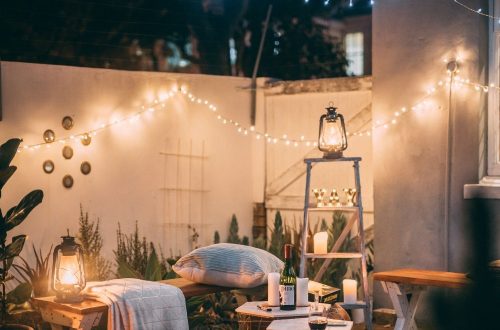Designing the Perfect Garden Room
This is a collaborative post
Garden rooms have become one of the most sought-after home upgrades of recent times, providing a versatile space that can be pressed into service for any purpose you have in mind. To get the most out of your investment, though, careful planning is an indispensable consideration. From choosing the purpose of your new addition, to ensuring security and making it fit with the wider property, here’s a primer on how to create the ideal garden room to meet your needs.
Defining the purpose of the room
Before pressing ahead with the look of a new garden room, considering its utility is essential. What do you need from this space? Will it be a home office? Maybe a gym? Could it be a studio, a guest space or just a multipurpose facility? The intended use is important, as it will govern layout, insulation requirements, and even how many windows you need and their placement.
For those who plan to use the space regularly year-round, extensive insulation, heating and ventilation are non-negotiable. If it is to be a creative space or an office, large windows and/or skylights will be a perfect enhancement. Multi-functional rooms – for example a guest room that can double as an office – will benefit from foldaway furniture and modular designs to maximise space.
Security, utilities and comfort
A garden room is a lot more than a converted shed – it’s an extension of your home that should complement the larger property. So ensuring security and utilities will be a crucial step.
- Security: Look for solid, lockable doors and windows, motion-sensitive lighting, and possibly smart security systems to ensure the safety of valuables.
- Utilities: If the room will require a supply of electricity, plumbing and internet access, plan these inclusions early on to prevent the need for expensive modifications later.
- Comfort: A garden room that is intended for use from January to December needs to be insulated properly. Double-glazed windows, heated floors, and quality insulation will ensure it stays warm in winter and cool in the summer.
It’s often a good idea to work with knowledgeable architects for a seamless design and functional efficiency. They will also help ensure that building regulations are met while taking care of your specific requirements.
Ensuring the room “fits”
An ideal garden room will complement, not clash with, the exterior of your home. Consider the following factors to ensure cohesion:
- Materials: Using similar building materials, colours and styles to the main home ensures a harmonious connection.
- Landscaping: Consider the paving, decking and greenery that is placed around your main property; matching this around the garden room will help it blend in.
- Views from the room: If you can place the garden room to capture the most scenic views while ensuring privacy for all concerned, this will assist not only in the utility of the room but also potential resale value when you come to sell the home.
Smart, integrated design choices will be more attractive to potential buyers, so some clear thinking at this stage will help realise a better return on investment.
A garden room is more than just an additional space – it’s an enhancement of your property and your lifestyle. By planning it all out beforehand, you can create a space that adds enjoyment and value to your property.



